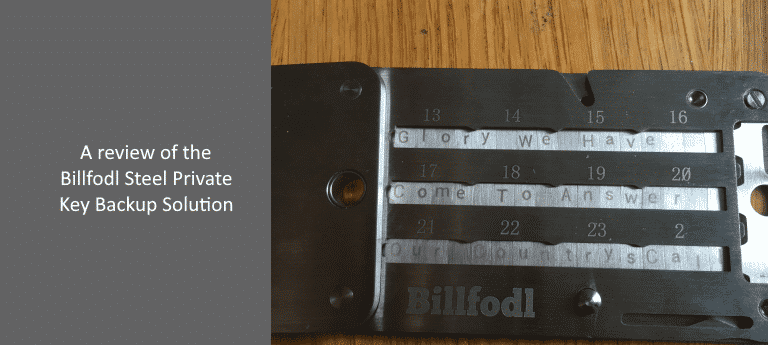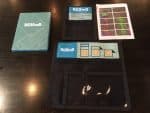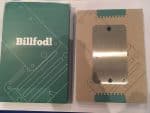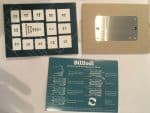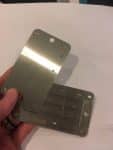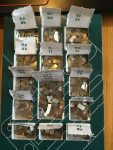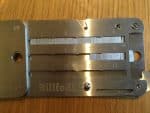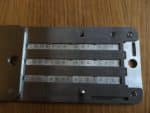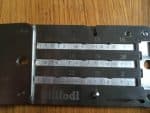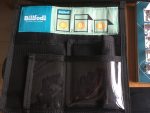For anyone who’s acquired crypto in any meaningful quantities, you’ll likely have gone through a similar process to that which many others did. Firstly, looking to get free bitcoin and coming across the wonder that is a faucet, then likely asking around for a recommendation for a crypto exchange, and shelling out some of your hard earned fiat on buying some crypto. Alternatively you got yourself a miner and mined some crypto.
While some people don’t mind leaving their crypto on an exchange, it isn’t recommended for any long-term storage given the number of hacks that have occured over the years. The only true way to control (and therefore fully own) crypto is by having your own wallet and private keys. These vary in type, ranging from bitcoin core (or the equivalent for your crypto of choice0 and saving your wallet.dat file, to dedicated software like Bitcoin Armory for those of you who want to run a full node as well on your computer and have a couple of hundred gigabytes of available storage. Some people prefer a web based solution, and there are loads of these available, others prefer a mobile app, or if you’ve been in crypto a while and want to dive in, you’ll likely have invested the €50-€80 or so on one of the main crypto hardware wallets that are out there, with Trezor, KeepKey and Ledger being some of the main ones used, although there’s a wide variety of new models from different manufacturers coming to the market.
Whichever you decide on, one of the key things you’ll need to remember is that without the private key that corresponds to your public key (aka your address), you’ve no way to send your crypto. There are stories abound, such as this guy who tried to get a British dump to allow him to dig through tons of rubbish to find a laptop he had thrown out before, but whose hard drive held (at the time) $80 million in bitcoin. Ouch!
Now when you set up a device, such as a Trezor, or any other solution you choose, one of the first and most important things is to take a backup of your private key, or in the case of a device that manages multiple crypto’s, to save the recovery key. It’s never recommended to have this on your computer, such as an unencrypted text file as anyone who gets access to your computer physically, or remotely through a virus, can take this with the corresponding address and move your crypto out of your control to theirs.
These are often cumbersome, with long complicated alphanumeric patterns for you to save, or a list of 12-24 different random words you have to enter in a particular order. Most hardware wallets will provide a slip of paper that you can write down the phrases, which is good if you a) don’t let it get damaged, b) don’t lose it, and c) anyone who might need it after you’re not around any more can use it, such as your estate if you want to hold it as part of your will.
My favoured solution up until now was pretty old school, laminating it to protect it from basic damage and hopefully to keep it in the mid-term, but I recently had an outreach from the guys at Billfodl who must have seen some of the hardware wallet reviews I do and asked me if I’d have a look at their solution, the Billfodl Cold Storage Bitcoin Wallet & Backup Device.
I said yes, as I’m always interested in writing about funky tangible crypto things, and a couple of days later I received a package by courier containing a Billfodl, some holographic stickers, and two velcro fabric pouches. So ahead of setting it up, i re-familiarised myself with the seed phrase recovery on my trezor. The 24 word recovery phrase gives you lots of words as you type, but by the time you hit four characters, I generally had one choice (although there was an occasional three letter word), so that meant I had to use the first four characters in the Billfodl for each word and use a spacer for the three letter ones.
The Billfodl packaging itself weights about half a kilo, so it’s a weighty thing, and consists of a box which when opened, contains two heavy duty cardboard pieces taped together. When you open one side and flip it out, one side contains your Billfodl, which is a little bigger than a credit card but as thick as an iphone and made of stainless steel, and then another section with all of the letters contained within cubby holes with perforated edges on the left, right and bottom so they flip up. The packaging says these are also recyclable.
I slipped out the billfodl and opened it out, and then took a flat head screwdriver to rotate the locking screw and to open the safety catch. Once this was open, I could open out the locking mechanism and access the three rows on each side. Obviously I’m not going to use an actual seed phrase for this review, but I wanted to still have a challenge to see if I could run out of letters. So considering I was doing this on the day of the Ireland vs Wales rugby match in the Six Nations, I decided on Ireland’s Call, given it has lots of three and four letter words, as well as lot of repetition with some of the letters.
The letters are small, but it was easy enough to go through the box and pick out the letters. For the letters, they are grouped together two at a time, and one side has a capital, with the other having a lowercase. In the middle were a mix of numbers and symbols, with some of them having blank sides which I could use as a spacer. If one went in sideways, it was easy to slide the letters out and fix it, and slide it back in. I repeated the process for the words of the lyrics, and am happy to see that I still had quite a few tiles left over, especially the vowels e and o which were used way more than everything else.
Once you’re done with both sides, you just need to click the catch back in, rotate the locking screw and you’re away. In my case I also received two Faraday bags, one was clearly to hold the wallet and you could slip it in and then fold it over to hide the logo. The second is a general one which can be used to store car keys, phones etc. My wife helped me test this out, she used her Android phone on a debit card which picked up the tag, and then put the card in the bag and tried again, and it didn’t pick it up, so that seemed to work as described too.
So all in all, the Billfodl does exactly what it says on the tin, it secures your private seed in a way that’ll last years or decades to come, so should someone need to recover your wallet in the future, they can. Also just having a look through their twitter feed, you can see lots of people who’ve put them to the test in huge fires, driving things over them etc.
The Billfodl is available for $89 + shipping, the small Faraday bag is available for $15 + shipping, and the larger for $35 + shipping, so if you’re looking for a way to secure your private keys long term, we’re happy to recommend this product which is ideal for someone who wants to secure their own keys, or for someone else looking for an interesting crypto birthday/christmas present for the crypto lover in their life.
Note: The guys at Billfodl did provide the items reviewed in this article, however this had no impact on our review as we hope you can see 🙂

